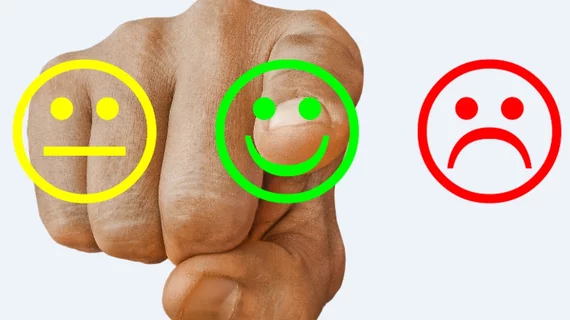Mayo Clinic uses automation to share Patient Praises with radiology staff
The Mayo Clinic is harnessing automation to help share “Patient Praises” with its radiology team—a potential remedy for burnout plaguing the specialty.
Staff recognition is essential in enriching the workplace experience, researchers wrote recently in the Journal of the American College of Radiology [1]. However, manually sifting through patient feedback can be a cumbersome and time consuming task. The Phoenix-based location of the noted academic medical center aimed to address this challenge by using natural language processing to sift through surveys and more easily share compliments with radiologists.
After implementing automation, it took Mayo less than a minute per case to share feedback (when forgoing additional edits). In follow-up surveys, a high proportion of employees found that feedback made them feel appreciated (94%) and valued (90%).
“Open responses within the staff feedback survey and ratings on the Likert scale indicate that our radiology staff felt acknowledged and valued by the department for their effort, which led to an overall improved workplace experience with an uplifting atmosphere,” Nelly Tan, MD, an abdominal radiologist and associate professor with Mayo Clinic Arizona, and co-authors wrote Dec. 28. “Subsequently, higher levels of employee satisfaction can develop into positive outlooks towards the organization they work for, fostering a joyful work environment that encourages better work performance in the future.”
Mayo first introduced the “Patient Praises” program in its radiology department in April 2022. It started off using a manual process, with a patient navigator reviewing and triaging all appropriate comments with staff members. The final survey featured 12 questions evaluated on an emoji scale using queries such as: “What impressed you?” Mayo administered the questionnaire to outpatients undergoing MR, CT, PET and breast imaging exams.
By February 2023, the institution transitioned to a new hybrid process that uses natural language processing, trained using over 1,000 patient comments. This included features such as spell check and placing comments on colorful backgrounds. Mayo also used software to auto-generate emails to members of the department, with the same patient navigator reviewing outputs to ensure accuracy. Tan and colleagues also measured the impact on staffing using a four-question survey with an open-text feedback box, with the vast majority share 5/5 on the Likert scale.
The radiology department gathered a total of nearly 11,000 patient surveys between April 2022 and June 2023. About 95.6% contained positive comments and 9.6% (or 978) were shared with team members. After implementing automation, 45.8% of Patient Praises were sent through the new hybrid workflow while 54.2% arrived manually. Mayo found that using the hybrid workflow without edits was most time-efficient at a median of 0.7 minutes per case (3 minutes faster than the manual workflow). NLP also increased the number of praises shared per month from 58 up to 70.
“We recognize that burnout is a complex topic that extends beyond the scope of a single intervention,” Tan and co-authors cautioned. “Our Patient Praises workflow initiative targets one critical dimension of well-being: the acknowledgment of our staff’s valuable work. This initiative, while not a comprehensive solution to burnout, serves as a positive step towards reinforcing staff morale and workplace satisfaction.”
Read more in JACR at the link below.

